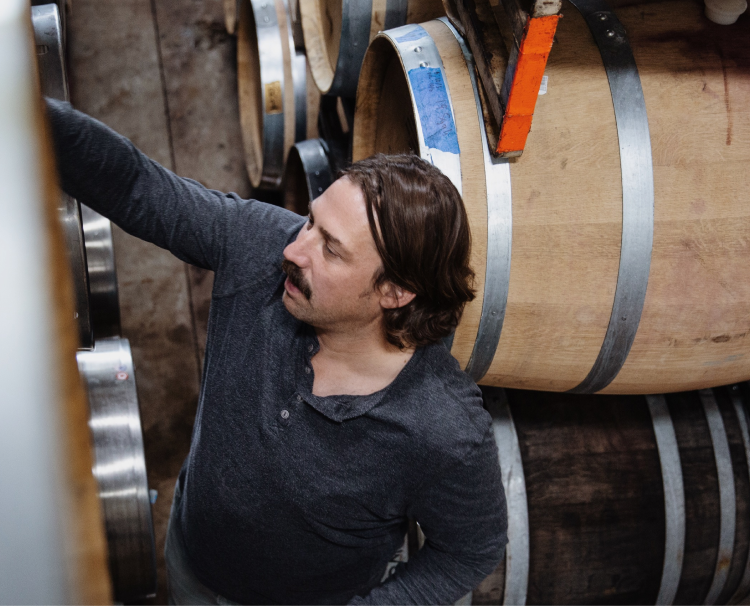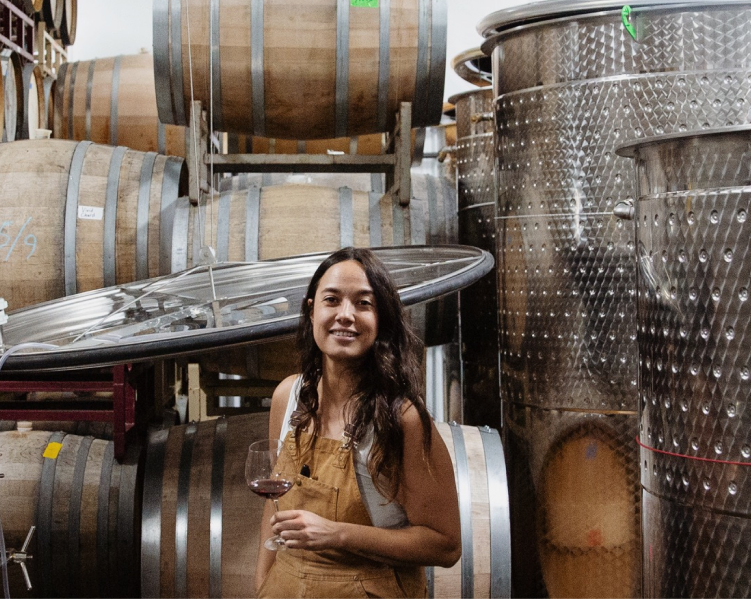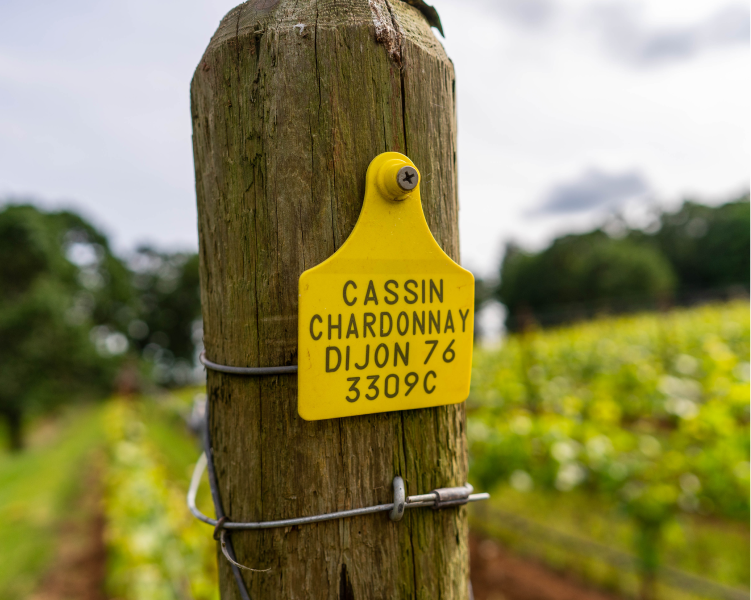Adapting to a New Normal
In August of this past year, we found ourselves in a strange place. Waiting with baited breath for the frenetic pace of harvest to begin, with a dose of those molasses days of summer, and clear skies. Those of you who live on the west coast – and across the country for that matter – know we cannot take it for granted.
Fire season has completely changed the way we look at these once carefree days. We decided to seize the moment, inviting a few of our closest friends of Division, and hosting a backyard barbecue. A momentary respite, filled with good company, good wines (we think so), and good food.
We’re in this together. One of the most amazing things about Oregon’s wine community is the real community we have here. Real idea sharing, real camaraderie. We, for one, hope that never disappears as our region becomes even bigger. In the face of insurmountable odds, making wine in these conditions, we have found that good wine can prevail. In particular, we’d like to recognize the Willamette Valley Winery Associated hosted round tables, where we winemakers came together to have an open dialogue on the issues. We also owe Herb Quoddy & Nicole, and folks in wine growing regions across the globe – from Australia to Napa – who were willing to jump on calls, and share their experiences making wines in regions hit hard by fires.
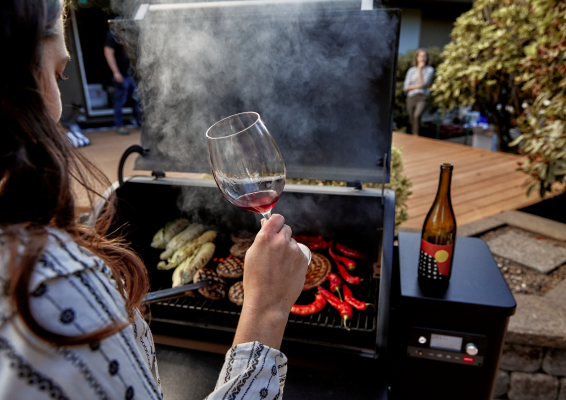
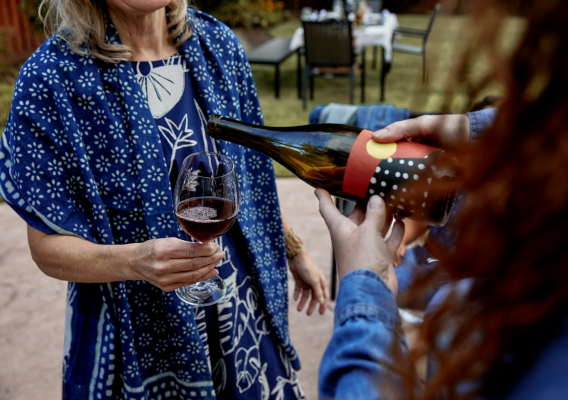
We’ve begun implementing several tactics to combat smoke taint, including:
- Shortened maceration
- Hard settling and light pressing
- Shortened aging
- Using un-toasted oak chips to bind smoke particulates
- Fine lees from previous vintage
- Drinking quickly
- And, above all, being honest
Back at the picnic, under a dusky sky, we sat down for a perfect summer meal. Consisting of Burgers (of course), Spanish Chorizo, a salad of Melon, Grilled Peppers, Cucumber & Buffalo Mozzarella, Heirloom Tomatoes with Chickpeas & Roasted Garlic Labneh, and lastly a A Big Grilled Steak with Rosemary & Lavender. We’ve included a few recipes here, worth bookmarking for your next grilling endeavors.
Heirloom Tomatoes with Chickpeas & Roasted Garlic Labneh
Serves 4 to 6, recipe by Andrea Slonecker
1 whole garlic bulb
3/4 cup cooked chickpeas, drained and rinsed
1 tablespoon extra-virgin olive oil, plus more for drizzling
1 1/2 teaspoon kosher salt, plus more to taste
Freshly ground black pepper
1 small red onion
1/3 cup white wine vinegar
1 1/4 cups labneh
2 teaspoons fresh lemon juice, plus more to taste
2 pounds mixed-color heirloom tomatoes, cut into thick slices
Flaky sea salt
2 teaspoons za’atar
Handful fresh mint leaves, cilantro leaves or (better yet) a combination
Preheat the oven to 400˚F with racks in the bottom and top thirds of the oven. Cut the garlic bulb in half crosswise through the fattest part. Place the two halves cut side down on a sheet of foil and wrap it tightly around them into a little pouch. Place the foil pouch directly on the top oven rack and roast until the garlic is incredibly soft and lightly browned, 30 to 40 minutes. Set the garlic aside to cool.
Meanwhile, pat the chickpeas dry, toss them with the oil and season with 1/2 teaspoon of the kosher salt and lots of pepper. Spread them on a rimmed baking sheet and roast on the bottom oven rack until nicely browned and crispy, 25 to 35 minutes. Set aside to cool.
Thinly slice the onion into rings using a mandolin with a finger guard or with a sharp chef’s knife (carefully!). Put the slices in a medium bowl and add the vinegar and 1/2 teaspoon of the kosher salt. Toss it all together, breaking apart the rings with a fork. Set aside, stirring rarely, until the onions are pickled, about 1 hour. (The pickles will keep in the fridge for up to 1 week.)
Squeeze the roasted garlic cloves from each half of the bulb into a medium bowl. Mash the cloves with a fork until as smooth as possible. Add the labneh, lemon juice and remaining 1/2 teaspoon kosher salt and use a whisk to whip it until totally combined and a little airy. Taste and add more lemon juice or salt as you’d like. (The labneh will keep in the fridge for up to 3 days, but it probably won’t last that long. Do bring it to room temperature about 1 hour before serving.)
Spread the labneh sauce to cover the bottom of a large platter. Layer the tomatoes over top and season them with lots of flaky sea salt and freshly ground pepper. Strew the chickpeas over the tomatoes. Drain some of the pickled onions and scatter them over top. Sprinkle with za’atar, followed by the herbs.
A Big Grilled Steak with Rosemary & Lavender
Serves 4, recipe by Andrea Slonecker
One 2-inch-thick porterhouse steak
1 tablespoon fine sea salt, plus a pinch or two
Extra-virgin olive oil
1 tablespoon coarsely cracked black pepper
Several sprigs fresh rosemary
Several sprigs edible lavender, plus some picked lavender buds
Flaky sea salt
1 lemon, halved
At least 1 hour and up to 48 hours before grilling (the longer the better), season the steak with the fine sea salt, coating all sides. Cover and refrigerate if cooking later, or set it aside at room temperature if it will be cooked within a few hours. (Make sure to let a chilled steak come to room temperature at least 1 hour before cooking.)
Prepare a fire in a charcoal or gas grill (preferably charcoal). For charcoal, when the coals are ready, bank them on one side of the grill for direct and indirect heat zones. Preheat the grate for high-heat grilling, or when you can hold your palm about 3 inches above the grate over the coals for less than 3 seconds. If using a gas grill, preheat on high, covered, for about 15 minutes, then turn half the burners off.
Pat the steak dry, and brush it lightly with oil, then season it with another pinch or two of fine sea salt and the cracked pepper on all sides. Line a platter with a bed of rosemary and lavender sprigs to rest the steak on after grilling.
Place the steak on the grill grate directly over the coals, and grill until nicely charred with a deep brown crust, about 5 minutes per side. When flare-ups happen, try moving the steak to another area of the grill, and turn it to prevent blackening. Once a crust forms, move the steak to the side of the grill without coals (or unlit), and continue cooking with the lid closed until an instant-read thermometer inserted in the middle registers 115 to 120˚F for medium-rare, turning every 5 minutes or so, 10 to 15 minutes total. Transfer the steak to the herb platter and lay more sprigs on top of it, if you have extras. Tent the steak loosely with a sheet of foil, and let it rest and absorb the amazing flavors for 10 minutes before slicing.
Remove the herbs on top of the steak, and transfer it to a cutting board. Cut around the t-shaped bone to free the meat on either side, so you essentially have 2 boneless steaks and a t-bone with a little meat still clinging to it. Slice the steaks crosswise against the grain into thick slices. Return the t-bone to the herb platter and fan the sliced meat back into position on either side of it. Drizzle with plenty of extra-virgin olive oil and squeeze some lemon over it all. Sprinkle flaky salt and scatter some lavender buds over the meat. Place the lemon halves and a little dish of salt on the platter for everyone to self-administer at the table. Draw straws to see who gets the bone.
In Good Company
Sign up for our newsletter, In Good Company, to receive stories on winemaking and the latest news on wine releases, events, and more.
